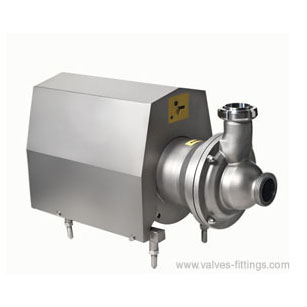Sanitary pumps are commonly rated by horsepower, volumetric flow rate, outlet pressure in meters (or feet) of head, inlet suction in suction feet (or meters) of head. The head can be simplified as the number of feet or meters the pump can raise or lower a column of water at atmospheric pressure. From an initial design point of view, engineers often use a quantity called specific speed to identify the most appropriate type of pump for a particular combination of flow and height.

Pump efficiency is defined as the ratio of the power imparted on the fluid by the pump in relation to the power supplied to drive the pump. For centrifugal pumps, the efficiency tends to increase with flow rate up to a point midway through the operating range and then declines as flow rates rise further. Pump performance data such as this is usually supplied by the manufacturer before pump selection. Pump efficiencies tend to decline over time due to wear. When a system includes a centrifugal pump, a significant design problem corresponds to the pressure drop characteristic of the head with the pump, so that it operates at or near the point of its maximum efficiency. Pump efficiency is an important aspect and pumps should be regularly tested.



